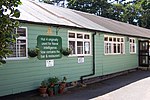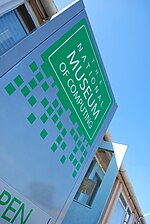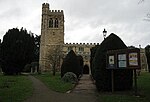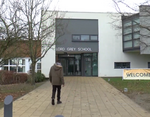Hut 8

Hut 8 was a section in the Government Code and Cypher School (GC&CS) at Bletchley Park (the British World War II codebreaking station, located in Buckinghamshire) tasked with solving German naval (Kriegsmarine) Enigma messages. The section was led initially by Alan Turing. He was succeeded in November 1942 by his deputy, Hugh Alexander. Patrick Mahon succeeded Alexander in September 1944.Hut 8 was partnered with Hut 4, which handled the translation and intelligence analysis of the raw decrypts provided by Hut 8. Located initially in one of the original single-story wooden huts, the name "Hut 8" was retained when Huts 3, 6 & 8 moved to a new brick building, Block D, in February 1943.After 2005, the first Hut 8 was restored to its wartime condition, and it now houses the "HMS Petard Exhibition".
Excerpt from the Wikipedia article Hut 8 (License: CC BY-SA 3.0, Authors, Images).Hut 8
Welchman Court, Milton Keynes Old Bletchley
Geographical coordinates (GPS) Address External links Nearby Places Show on map
Geographical coordinates (GPS)
| Latitude | Longitude |
|---|---|
| N 51.99717 ° | E -0.74193 ° |
Address
Hut 8
Welchman Court
MK3 6DU Milton Keynes, Old Bletchley
England, United Kingdom
Open on Google Maps









